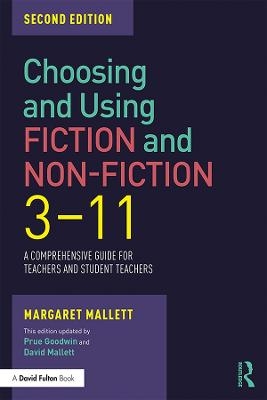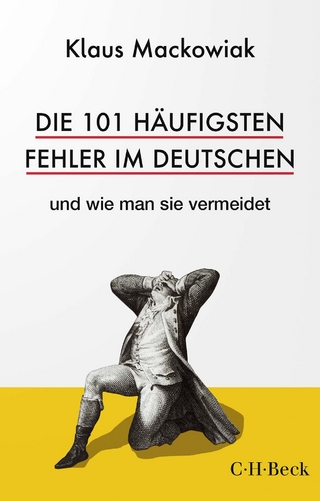
Choosing and Using Fiction and Non-Fiction 3-11
Routledge (Verlag)
978-1-138-50180-5 (ISBN)
Choosing and Using Fiction and Non-Fiction 3-11 is a guide for primary teachers to the many kinds of texts children encounter, use and enjoy in their nursery and primary school years, providing an invaluable insight into the literature available. Addressing important issues and allowing for the voices of teachers, reviewers and children to be heard, it contains suggestions of best practice which offer a more creative approach to learning.
Including both fiction and non-fiction, with genres ranging from picturebooks to biographies, this fully updated second edition features:
New coverage on recent books
Discussion of new changes in concepts of literacy, particularly focused on technological advances in moving image media and virtual worlds
The balance between print and screen-based texts on developing children’s visual and multimodal literacy
Annotated booklists for each genre for different age groups
New sections on equality, diversity and translation
Exploring fiction, non-fiction and poetry, Choosing and Using Fiction and Non-Fiction 3-11 is an invaluable resource, supporting teachers as they help children on their journey to becoming insightful and critical readers of non-fiction, and sensitive and reflective readers of fiction.
Margaret Mallett was born in Newcastle upon Tyne in 1941. She died in 2017, writing, reviewing and supporting the journal English 4-11 to the end. She was a Fellow of the English Association. After a number of years teaching in primary schools she studied at the London University Institute of Education and at Sussex University. She then spent two years on a SSRC research project, English in the Middle Years of Schooling, writing its published report. Thereafter she was a member of the Goldsmith’s College Education Department for nearly thirty years. There her first concern was always for the students in her care but where she also spent much time thinking and writing about the importance of non-fiction learning in the early and primary years. In retirement she wrote two books which her former students had suggested would have helped them: this book and the Primary English Encyclopedia, now in its fifth edition. Prue Goodwin is a freelance lecturer in literacy and children’s books. She has helped in the editing of this second edition of Choosing and Using Fiction and Non-Fiction 3-11. David Mallet was Margaret’s husband for more than fifty years qualified as a Chartered Accountant in 1968 and, between working for two different banks, spent thirteen years at the Bank of England. His only published work, unsurprisingly, concerned bank accounting, auditing and regulation. However, much more pleasurably, he also read every word Margaret published. His role was to confirm inter alia, as a beginner in the field, that ‘meaning’ was crisply conveyed, there was no ambiguity and assertions were evidence-based.
Acknowledgements; Preface; Author Biographies; Prologue; Part I FICTION; 1. Introduction to Part I; 2. Children’s Literature; 3. Fiction in the Classroom; 4. Picturebooks; 5. Traditional Tales; 6. Genre fiction, ‘Popular Culture’ texts and formats and media; 7. Longer Stories and Children’s Novels; 8. Animal Stories; 9. Realism; 10. Historical Fiction; 11. Fantasy Stories and Novels; 12. Reading in a Wider World; 13. Using Longer Stories and Novels; 14. Playscripts; 15. Poetry; 16. Poems Playing with Language; 17. Poems with Distinctive Forms, Rhythms and/or Rhyming Patterns; 18. Story or Narrative Poems, Classic Poems and Poems from Different Cultures and Traditions; 19. Poems with Freer, Less Traditional Forms and Patterns; 20. Introduction to Part II; 21. Children’s Non-Fiction Literature in the Twenty-First Century; 22. Models of Non-Fiction Kinds of Learning and Some Guiding Principles; 23. Non-Fiction and Classroom organization, gender issues and assessment; 24. Classifying Non-Fiction Text Types and Thoughts Towards a Critical Approach; 25. Introducing Chronological Text Types; 26. Young Researchers Read and Write Chronological Ordered Accounts; 27. Instruction Texts; 28. Introducing Non-Narrative Non-Fiction Texts; 29. Report Texts; 30. Explanation Texts; 31. Using Report and Explanation Texts; 32. Discussion and Persuasion Texts; 33. Reference Texts; 34. Using the School and Classroom Libraries; 35. Conclusion to Part II; Bibliography; Useful Information and Websites
| Erscheinungsdatum | 21.11.2019 |
|---|---|
| Zusatzinfo | 11 Line drawings, black and white; 33 Halftones, black and white; 44 Illustrations, black and white |
| Verlagsort | London |
| Sprache | englisch |
| Maße | 174 x 246 mm |
| Gewicht | 260 g |
| Themenwelt | Geisteswissenschaften ► Sprach- / Literaturwissenschaft ► Sprachwissenschaft |
| Sozialwissenschaften ► Pädagogik ► Schulpädagogik / Grundschule | |
| Sozialwissenschaften ► Pädagogik ► Vorschulpädagogik | |
| ISBN-10 | 1-138-50180-8 / 1138501808 |
| ISBN-13 | 978-1-138-50180-5 / 9781138501805 |
| Zustand | Neuware |
| Informationen gemäß Produktsicherheitsverordnung (GPSR) | |
| Haben Sie eine Frage zum Produkt? |
aus dem Bereich


